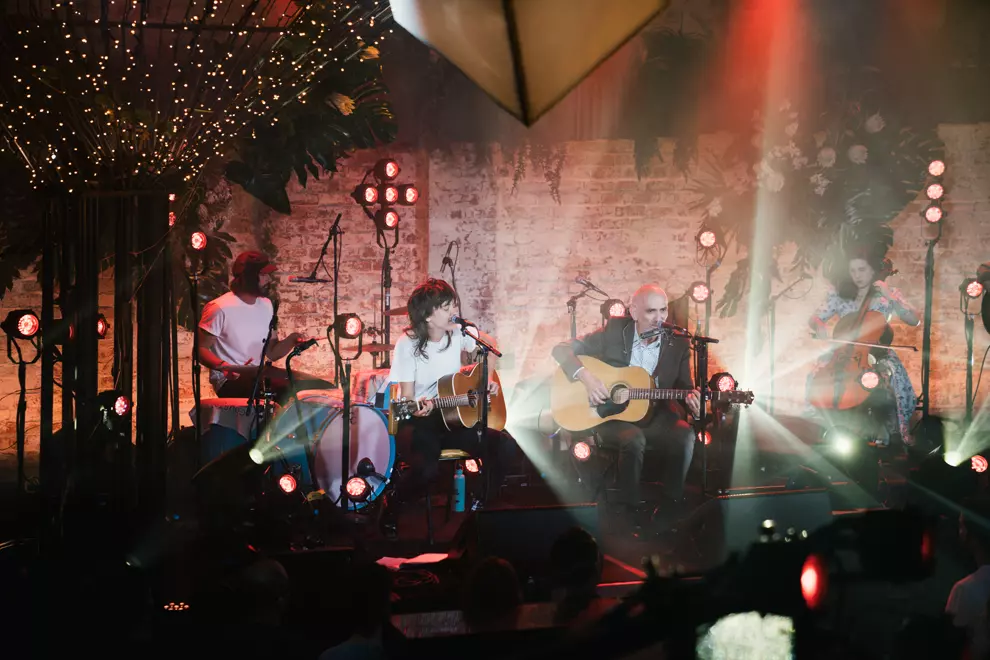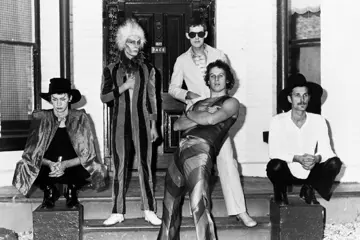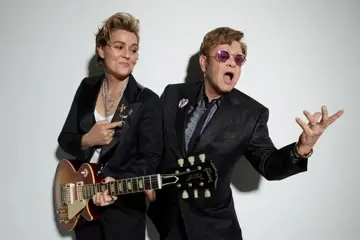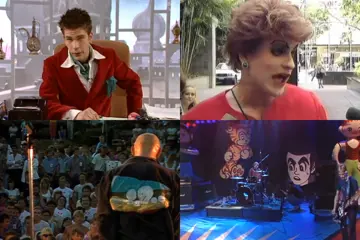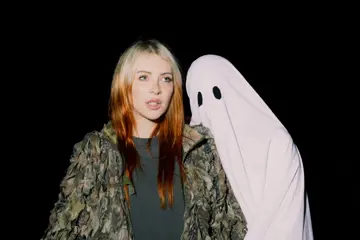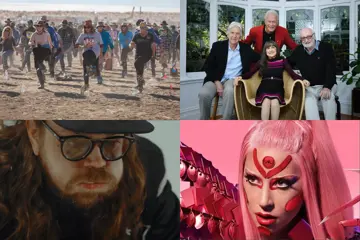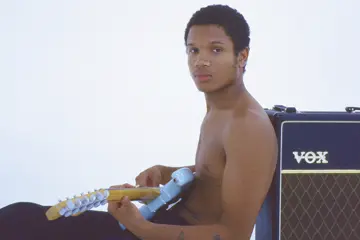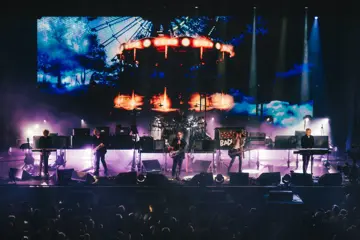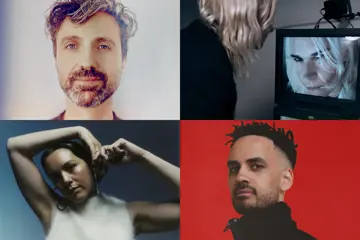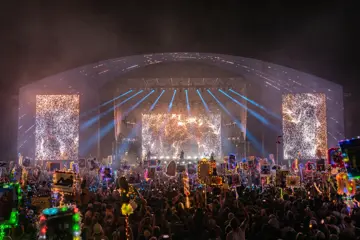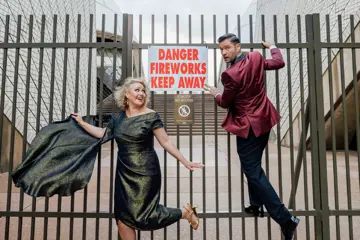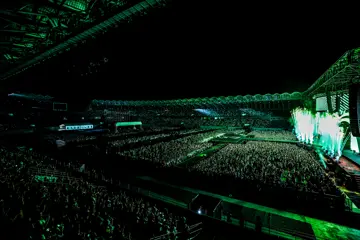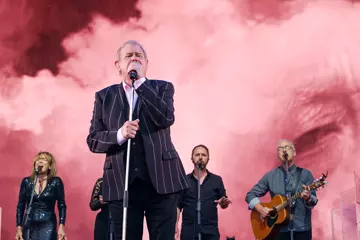As reported by The Music, a new partner enters the history of Australian music TV channels today (July 1).
Foxtel Group’s partnerships with Brisbane-based 120-staff Nightlife Music sees the arrival of seven channels covering dance, retro, kids, trending on charts and TikTok, and the return of easy listening and contemporary Max, as well as the country music-focused CMC.
But one of its significant channels is Australian Made, which plays 100 per cent local music, new, established and legacy. Its Head of Music & Content, Matthew Lymbury, calls it “A true celebration of Aussie music, now available in households nationwide.”
Nightlife Music’s background is in supplying licensed background music and commercial music licensing to 7,500 clients in dozens of countries, covering hospitality, fitness, retail, accommodation, leisure, dining, cruising, education and entertainment.
Don't miss a beat with our FREE daily newsletter
The “Australian Made” tag emerged on its multi-award-winning CrowdDJ app. It was launched in 2016, allowing patrons, whether having a drink with friends in a bar, working out in a gym or hanging out in a bowling alley or luxury cruiser, to select their song choices at a jukebox-style kiosk, or use the cloud-based app to integrate their Spotify playlists with that of the venue.
In 2024, it recorded 14.8 million songs handpicked in CrowdDJ venues. 1.8 million of these were by Australian acts.
The Australian-Played kangaroo icon told patrons when they selected an Australian song. Nightlife Music quickly discovered that its customers strongly supported Australian music, high on AC/DC and Dom Dolla.
One of its executives, Leanne de Souza, a one-time artist manager, told this writer five years ago, “Our data shows people are more likely to pick a song if they know it’s Australian. CrowdDJ is showing its potential for playing more Australian music than commercial radio.”
This week, Matthew Lymbury told Mediaweek that having an all-Australian channel fitted in with the company’s long-time push through its “Australian Played… Australian Paid” to actively try to promote local music and increase royalties to domestic artists.
“We have the data, we have the evidence. We know what songs they want to hear and the artists [they] listen to as well. So being able to programme a whole music video channel with Australian artists is great.”
The association with Foxtel came out of the blue when the broadcaster approached them. Initially, Nightlife Music thought they could use its existing technology. But Lymbury said they soon discovered it was a learning curve to adapt to something as, say, captioning and broadcast scheduling.
Many of the solutions came from Amagi, which operates in 150 countries delivering solutions for broadcasting, streaming and CTV advertising on 150 platforms and 5,000 channel deliveries.
Nightlife Music managed to keep up with its five-week deadline. Lymbury recounted to Mediaweek of the first time they ran the channels together, “They had captions playing in and all the different logos and pieces coming in and across. And it was a real goosebumps moment. It was amazing that in about five weeks, we’ve pulled that together… the full seven stations.”
TIMELINE: GREAT MUSIC & POWER POLITICS
1995
The first 24-hour music channel, Red, arrives in April with presenters Ian “Molly” Meldrum, ex-soap stars Nathan Harvey and Megan Connolly, and unknowns Jabba, Kelly Burchill and Kyla.
It is launched by Galaxy, the first provider of subscription TV in Australia, alongside Premier Sports Network, TV1, Arena, Max and Quest.
Its format is videos, concert specials and chats.
1996
On June 14, Optus Vision, a joint venture between radio network Austereo and Village Roadshow, brings ARC Music Television into play.
The format is similar, but ARC goes for a more musical route, with respected media figure Kim Vecera as managing director, and radio identities Dean Dezius as programmer. VJs are radio folks and musos.
Both sides insist there is no rivalry, but a week before ARC’s launch in Sydney, Red suddenly has its “delayed” launch.
1997
In April, the Asian “cheap and cheerful” music television franchise (V) enters the Australian market with an English-speaking version produced in Sydney, and replaces Red, which was then the ninth most popular service on Foxtel and Galaxy.
(V) was a partnership between Rupert Murdoch’s Asian satellite broadcaster, Star TV, and music labels Sony, BMG, EMI and Warner.
Its first channel manager was ex-Network TEN Video Hits producer Donna Andrews, and then high-profile radio executive Barry Chapman.
A second [V] branded channel is Video Hits, which focuses on music without TV footage.
MTV US approaches the local companies about rebranding ARC as MTV Australia. It has previously run on free-to-air Nine Network on Fridays and Saturdays, headed by Richard Wilkins. It ended in 1993 when Nine refused to pay high production costs and licensing costs.
The rebranded MTV officially comes live on March 20 through Optus.
2002
MTV is added to the Foxtel platform in December, and to the Austar platform two years later.
2004
Becoming MTV Networks Australia, it starts its own local shows, including an Aussie version of TRL with 2DAY FM’s Kyle Sandilands and MTV Full Tank.
Sister channel VH1 goes live on March 14 as Foxtel introduces its digital network.
Regurgitator’s manager, Paul Curtis, pitches a Band In A Bubble concept to XYZ Networks, in which the band is filmed recording in a plastic bubble on Melbourne’s Federation Square. The stunning concept is adopted overseas.
2005
The inaugural MTV Australia Video Music Awards at Luna Park's Big Top are hosted by the Osbourne family with a circus theme.
2007
On January 27, MTV premiered The Lair, a live show filmed every Thursday at Sydney’s Metro Theatre, featuring new original local talent and overseas stars.
That year, Snoop Dogg was banned from appearing at the awards because of criminal charges in America involving drugs and firearms. The channel launches a “Vote For Snoop” campaign through MySpace, featuring a video clip in which the rapper insists he loves Australia so much that he wants to move there. He is allowed in.
2010
In May, VH1 is replaced by MTV Classic, designed specifically to showcase classic contemporary music and artists, targeting the 25-40 year old demographic.
Six months later comes MTV Hits with wall-to-wall chart makers, MTVN Live with concert and festival footage and documentaries from around the world, and MTVN Live HD.
MTV drops the words “Music Network” from its name as it expands into reality series. One is Freshwater Blue, which follows 12 teenagers from Freshwater in Sydney’s Northern Beaches.
The combined Australian and New Zealand feeds are merged and moved to programming out of Sydney.
2011
After 24 years, Ten axes its weekend Video Hits, citing changes in viewer behaviour. Its last show was on August 6.
Indie label trade body AIR says, “We’re sad about the fact that Video Hits has stopped. Regardless of what you think about most music on Video Hits, mainstream coverage of music has a trickle-down effect on less commercial music.”
Hip hop artist Urthboy adds, Video Hits had played his label Elefant Traks’ videos in recent years to “more than Channel V and MTV to a bigger audience.”
2013
Major move as Viacom International moves local MTV operations to its London offices.
2016
As Australian consumers increasingly turn to the online to get their video fix rather than on TV, Channel [V] ratings drop. It is closed on March 25, replaced with a two-hour timeshift channel of [V] Hits. All its VJs are let go.
2019
Network 10 plans to broadcast MTV Australia as a free-to-air channel.
2020
As part of a new deal with ViacomCBS, Foxtel overhauls its music channels. Out go [V], Max and CMC, and in come MTV HITS, MTV Classic, Club MTV, CMT (Country Music Television), and Nick Music for 4 to 15-year-olds.
ViacomCBS Executive Vice President, Music & Talent Programming / Events, Bruce Gillmer says: “Expanding ViacomCBS Networks International’s portfolio of music channels allows us to build even deeper relationships with Australian music fans, artists and labels.
“These branded channels resonate with music fans all over the world, and launching in Australia gives us even more opportunity to bring audiences great music across genres.
“We’ve showcased incredible Australian artists from Gang of Youths to The Veronicas internationally. Launching these new music brands on Foxtel gives more Australian artists the opportunity to connect with fans locally and, potentially, around the world.”
10 Shake is introduced as a kids’ channel using past footage from MTV and Nickelodeon.
2023
MTV Australia is removed from Foxtel, and later MTV Australia and New Zealand are replaced by MTV Global in August.
2025
In June, after ditching MTV music channels, Foxtel has its new strategy from July 1. Aside from Nightlife Music’s shows, Foxtel also taps into radio network Southern Cross Austereo’s LISTNR as a new linear audio music partner. It will curate 25 playlists.
These include Triple M’s stations: Classic Rock, Country, 70s, 80s, 90s and 2000s. From the Hit Network comes RnB Fridays Radio, Dance Hits, Blender Beats, Oldskool 80s, 90s Hits and Easy Hits.
There are also indie and alt lists, chill and acoustic, and good vibes and road trips.

